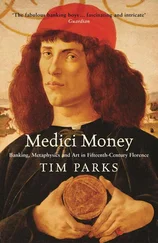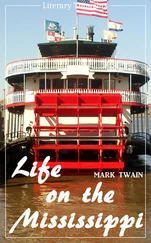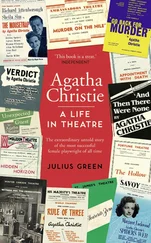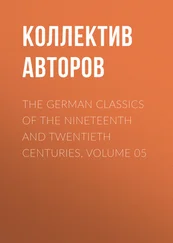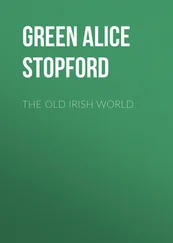Alice Green - Town Life in the Fifteenth Century, Volume 1
Здесь есть возможность читать онлайн «Alice Green - Town Life in the Fifteenth Century, Volume 1» — ознакомительный отрывок электронной книги совершенно бесплатно, а после прочтения отрывка купить полную версию. В некоторых случаях можно слушать аудио, скачать через торрент в формате fb2 и присутствует краткое содержание. Жанр: literature_19, foreign_antique, foreign_prose, Историческая проза, на английском языке. Описание произведения, (предисловие) а так же отзывы посетителей доступны на портале библиотеки ЛибКат.
- Название:Town Life in the Fifteenth Century, Volume 1
- Автор:
- Жанр:
- Год:неизвестен
- ISBN:нет данных
- Рейтинг книги:3 / 5. Голосов: 1
-
Избранное:Добавить в избранное
- Отзывы:
-
Ваша оценка:
- 60
- 1
- 2
- 3
- 4
- 5
Town Life in the Fifteenth Century, Volume 1: краткое содержание, описание и аннотация
Предлагаем к чтению аннотацию, описание, краткое содержание или предисловие (зависит от того, что написал сам автор книги «Town Life in the Fifteenth Century, Volume 1»). Если вы не нашли необходимую информацию о книге — напишите в комментариях, мы постараемся отыскать её.
Town Life in the Fifteenth Century, Volume 1 — читать онлайн ознакомительный отрывок
Ниже представлен текст книги, разбитый по страницам. Система сохранения места последней прочитанной страницы, позволяет с удобством читать онлайн бесплатно книгу «Town Life in the Fifteenth Century, Volume 1», без необходимости каждый раз заново искать на чём Вы остановились. Поставьте закладку, и сможете в любой момент перейти на страницу, на которой закончили чтение.
Интервал:
Закладка:
45
Besides the customary Latin prayers a Norfolk guild used English prayers for Church and State, harvest and travellers, like our Litany. (English Guilds, 111-114.) The play of the Lord’s Prayer was performed by a York guild. “They are bound to find one candle-bearer, with seven lights, in token of the seven supplications in the Lord’s Prayer.” “Also they are bound to make, and as often as need be to renew, a table showing the whole meaning and use of the Lord’s Prayer, and to keep this hanging against a pillar in the said cathedral church near to the aforesaid candle-bearer.” (Ibid. 137-9.) See also Hibbert’s Shrewsbury Guilds, 62. For Pecok as “the first author of the Middle Ages who propounded reason as a judge of faith,” and one who “might be claimed as at once the forerunner of the Erastian theory of the church, and of the Rationalist interpretation of its theology”; and for the place now given to general councils see Rogers’s Agriculture and Prices, iv. 11-13. For the first signs that the revenues of monastic houses were to be devoted to other purposes. (Ibid. 101.)
46
Agriculture remained stationary during the fifteenth and sixteenth centuries. It was in fact but little changed from the time when Walter of Henley published his treatise until the time when Fitz Herbert wrote his work about 1523 embodying most of the rules which Walter had given before him. The real progress lay not in the country but in the town.
47
Nott. Records, ii. 143, 145, 167, 179, 191; iii. 21, 29.
48
Clément, Jacques Cœur, 196-7. Nicholas Sturgeon was ordered by the Privy Council in 1442 “to go and choose six singers of England such as the messenger that is come from the Emperor will desire for to go to the Emperor.” Proceedings and Ordinances of Privy Council, ed. Sir Harris Nicholas, 1834, v. 218.
49
Mr. Jacobs tells me that he has found no direct evidence of Jews lending to townspeople in the twelfth century; there are only some indications such as that they sought for debtors in S. Paul’s; (The Jews of Angevin England, p. 45) and that they claimed to attend the assizes at Bury. (Ibid. 142.) If their business lay, as it seems, with nobles and landowners, it would prove the absence of any demand for capital in the towns.
50
For an account of the Staple see Schanz, i. 327 et seq.; von Ochenkowski, Englands Wirthschaftliche Entwickelung im Ausgange des Mittelalters, 220; Stubbs, ii. 446-8.
51
Schanz, i. 329, &c.
52
Ibid. 657.
53
Schanz, i. 543; von Ochenkowski, 216-7. For the Law Merchant see Mr. Maitland’s Pleas in Manorial Courts (Selden Soc.), p. 137. For Staple Statutes see 14 R. II. cap. 3, 4.
54
Schanz, i. 332, 338.
55
See Paston Letters, iii. 166.
56
Schanz, i. 501.
57
Von Ochenkowski, 202, 210; Schanz, 495-500. Petition of merchants in 1442 to be relieved from these rules refused. Proc. Privy Council, v. 217.
58
In 1442 the merchants of the Staple of Calais begged that payment should be made to the soldiers for the surety of the merchants’ wools. (Proceedings of Privy Council, v. 215, 216.) When the lords seized Calais in 1459, “they shifted with the Staple of Calais for £18,000” to carry on the war with. After Edward’s accession, in 1462, the merchants claimed repayment. Edward refused, and after long efforts the merchant who represented them and had borne the chief charges died a ruined man in sanctuary at Westminster (Fabyan, 635, 652-3).
59
A sack was 364 lbs. of 16 oz. each (Schanz, ii. 569).
60
Stubbs, iii. 69, Stat. 27, H. VI. c. 2.
61
Schanz, ii. 15.
62
Under the system of paying a fixed sum in good and bad years alike the poor merchants became bankrupt, and in the middle of the sixteenth century the number of wool exporters fell enormously (Schanz, ii. 17). An extremely interesting statement by the Staplers of the causes of their decay is given by Schanz in vol. ii. 565-9.
63
In the years from 1485 to 1546 general trade had increased by one-third, while the wool trade had decreased by one-third (Schanz, ii. 12).
64
In the Paston Letters there is even in the fifteenth century complaint of the quality of Norfolk cloth, i. 83.
65
Ashley’s Woollen Industry, 39, afterwards expanded in his Economic History, part ii., chap. iii. This book was published after these pages had been printed. Riley’s Mem. London, 149-50; Schanz, i. 436-440, 588-9.
66
The first charter to the company of drapers or dealers in cloth in London was in 1364.
67
This statement is made by Schanz, i. 441, and his reasons are given, ii. 1-7. 31 H. VI. c. 8.
68
4 H. VII. c. 11; Schanz, i. 449.
69
Schanz, i. 11; ii. 17, 18.
70
Schanz, ii. 571-2.
71
In 1472 the prior of Christ Church, Canterbury, buys from a London alderman two pieces of cloth for gentleman’s livery, nine for yeoman’s, and five for groom’s, the price, £39 14 s. ; from a “raymaker” in New Salisbury he buys similar cloths in 1475 and 1480; again from Hadley, in 1499, he got eighteen pieces, and russet cloths from a Cranbrooke clothier. (Hist. MSS. Com. v. 436-7, 459.) Fastolfe bought cloth for his soldiers at Castlecoombe, Wilts (Paston Letters). The Warden of Merton, Bishop Fitz James, bought for his fellows and himself at Norton Mandeville in Essex. (Rogers’ Economic Interpretation of History, 151.)
72
Paston Letters, ii. 235. 1465.
73
Debate between the Heralds of France and England, probably published from 1458 to 1461, translated by Pyne, p. 61. Published in French by the Société des Anciens Textes Français. In 1454 the commons petitioned that silver mines in Cornwall, Devon, Dorset, and Somerset, should be worked (Schanz, i. 493). For coal see Paston, iii. 363. Nottingham Records, i. 145. In 1307 there were complaints about the corruption of London air by use of coal. Cruden’s Gravesend, 84-5.
74
Hist. MSS. Com. vi. 347.
75
Rogers’ Econ. Interpretation, 276.
76
Brazen pieces, invented 1340 or 1370, were first used in England at the siege of Berwick, 1405 (Eng. Chron. 1377-1461, p. 184); not known in France so well (Three books of Polydore Vergil’s English History, 9-1 °Camden Society). For the Lydd gun of 1456 the gunmakers were paid 11s. 8d.; the binding and iron for it cost 18s. “Guns with six chambers” mentioned as early as 1456 in Cinque Port towns. (Hist. MSS. Com. v. xvii.)
77
Journ. of Archæl. Association, 1871, p. 416; Hist. MSS. Com. vi. 489.
78
Pirenne, Dinant, 102, 94, 95. In the fifteenth century the Dinant traders sent their wares by Antwerp, not by Damme.
79
For English brick building see Rogers’ Agric. and Prices, iv. 440. First notice of bricks at Cambridge 1449, in London 1453, in Oxford 1461; common in eastern counties before end of fifteenth century. Ibid. iii. 432, 433. The proverb, “as red as Rotherham College,” refers to one of the first brick buildings in Yorkshire.
Читать дальшеИнтервал:
Закладка:
Похожие книги на «Town Life in the Fifteenth Century, Volume 1»
Представляем Вашему вниманию похожие книги на «Town Life in the Fifteenth Century, Volume 1» списком для выбора. Мы отобрали схожую по названию и смыслу литературу в надежде предоставить читателям больше вариантов отыскать новые, интересные, ещё непрочитанные произведения.
Обсуждение, отзывы о книге «Town Life in the Fifteenth Century, Volume 1» и просто собственные мнения читателей. Оставьте ваши комментарии, напишите, что Вы думаете о произведении, его смысле или главных героях. Укажите что конкретно понравилось, а что нет, и почему Вы так считаете.

